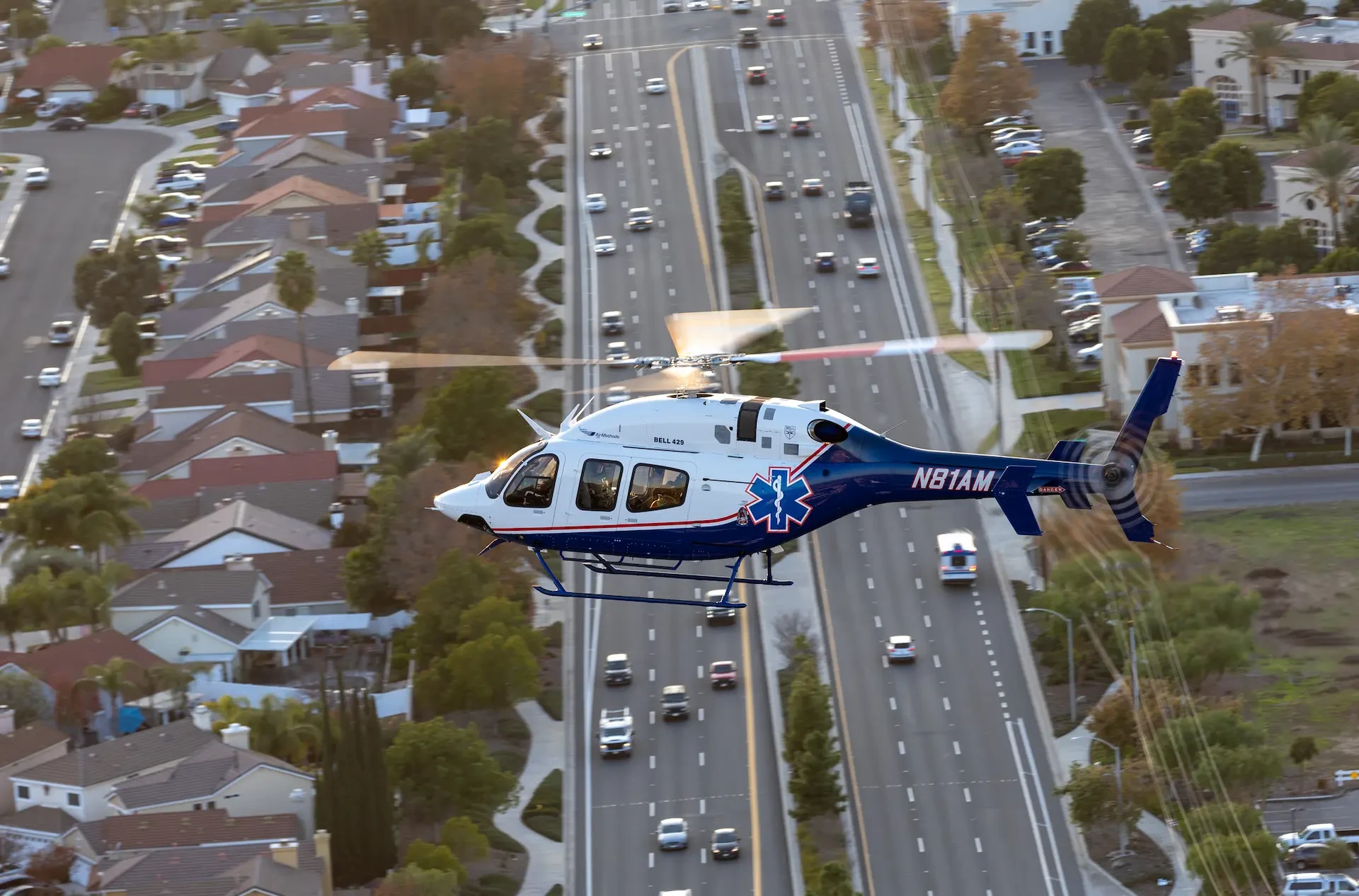Air Methods subsidiary Mercy Air recently put a 429 fitted with a lightweight interior into service from its base at Hemet, California, its first in the PacWest region and the first to be put into a community-based service, as opposed to a hospital-based inter-facility operation, as Ned Dawson reports.
A Change
Airbus’ EC135/H135 and EC145/H145 have become ubiquitous in the EMS and AirMed sector, so Air Methods’ decision to go with the Bell 429 may seem somewhat unusual but Air Methods’ area manager Jared Szaroleta explained the logic behind the type’s selection. “At the time it was difficult to obtain the equipment types that might be seen as optimal for each geographic region, and there was a global spike in pricing driven by scarcity and a number of other factors, all exacerbated by Covid.”
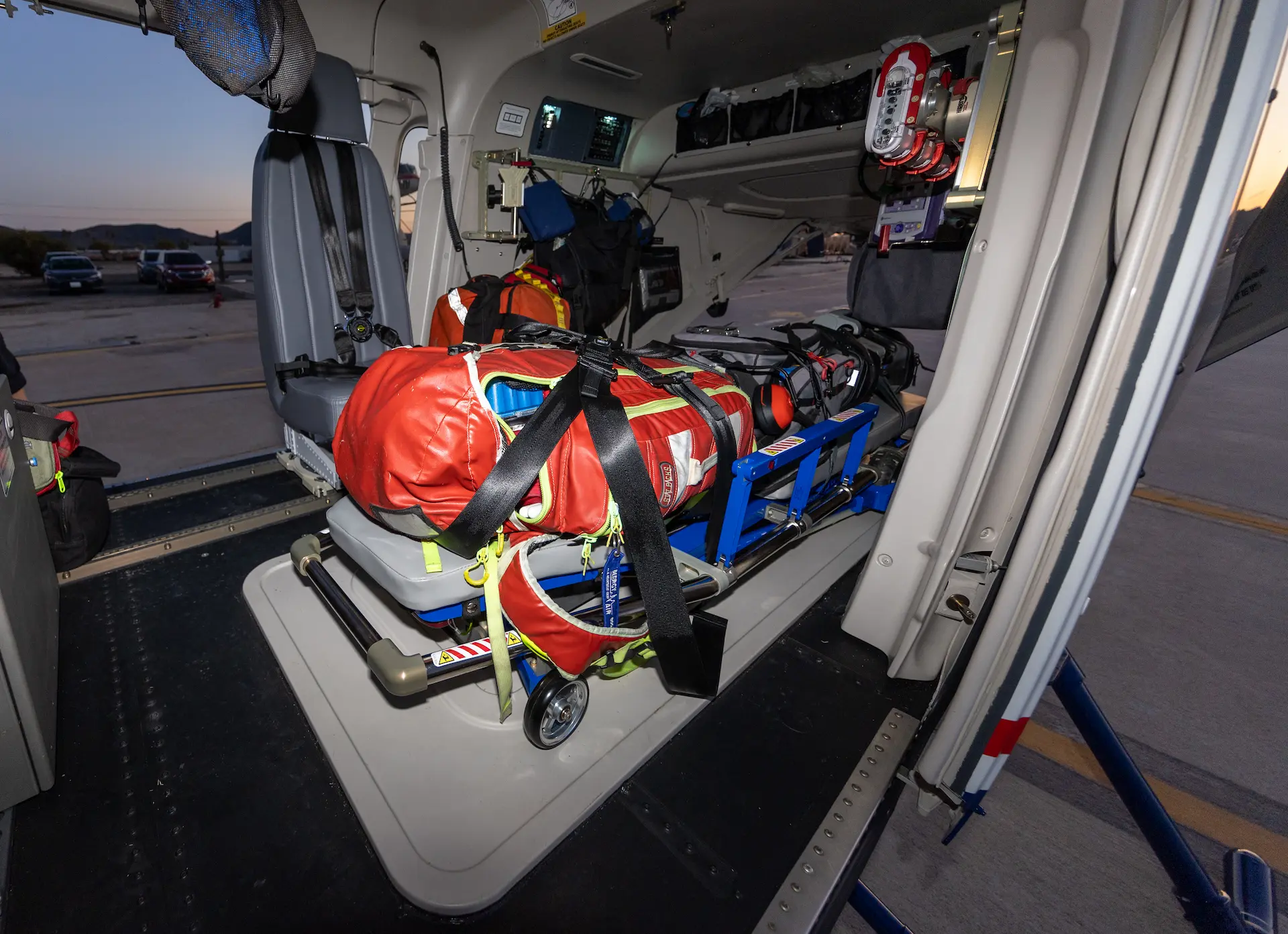
Be There When Needed
“We were forced to choose between overpaying for EC135s or 145s – if you could even find one – or trying to find a more readily available and less expensive airframe. With the 135 or 145 you’re also dealing with lower in-service rates, because of issues with the procurement of parts and their general airframe construction and componentry. As a company, we have about ten years of experience with the 429s and we did a deep analysis to establish that they can and will work here.” He noted that the 429 is a domestically controlled product with an established, reliable pipeline for parts. “They’re brand new and highly digitized, so there are numerous areas in certification and maintenance where, within our organization, we can reap the benefit of that. Maybe it’s not quite as capable as some of those other airframes, but it will be in service more often so we will be able to give better, more reliable service to the patients we serve.”
Unlike Canada and about a dozen other countries, the US’ FAA has denied Bell’s petition for a maximum gross weight increase from 7,000lbs to 7,500lbs for its 429 model. Therefore, as the average empty weight of a standard 429 with a full medical interior is around 5,100lbs, United Rotorcraft – another Air Methods subsidiary – expended significant effort at its Denver facility over several months to reduce the empty weight of Mercy Air’s new machine. “It’s a custom, one-off interior and that took an enormous amount of time and investment,” remarked Szaroleta. “There was really no other platform available that we could get our hands on to do that with.” She considers the high probability that the 429 will prove to have a much higher percentage of time available in-service to be a major plus, remarking, “Because our customers depend on us being there, especially on scene calls, and because we’re the only one in the area to carry blood on board, it’s vitally important to be available when we’re needed.”
429 Flexibility
Hayflich praises the 429’s flexibility and cites the huge variability of terrain and operating environments, along with the wide range of clinical requirements the CBS (Community Based Service) role demands, as factors that make that flexibility a key feature of the new aircraft. “We do so much scene work here, so we have to be ready for whatever we encounter. However, we also do a lot of inter-facility transport so there’s a lot of specialty stuff that the hospitals rely on us for, be it balloon pumps, intubation or transfusing blood,” she remarked. From his clinician’s perspective, flight medic Aaron Kleinschmidt considers the increased room in the 429’s cabin to be the greatest benefit it brings to the operation. He elaborated, “If you use an ECMO machine, you have to have a lot of room because then you need all sorts of other machines at the same time. That’s a highly specialized capability and not all bases have it, but now that we have the larger airframe, it’s something that we will be able to pursue. I took this job to treat patients both on the ground and in the air, it’s what I trained for and this aircraft lets me do that.” Hemet is one of the bases where its aircraft carry onboard blood products, and while this is a standard situation at almost all Air Methods CBS bases with a high proportion of scene and trauma calls, Hemet is the only operator so equipped within its service area.
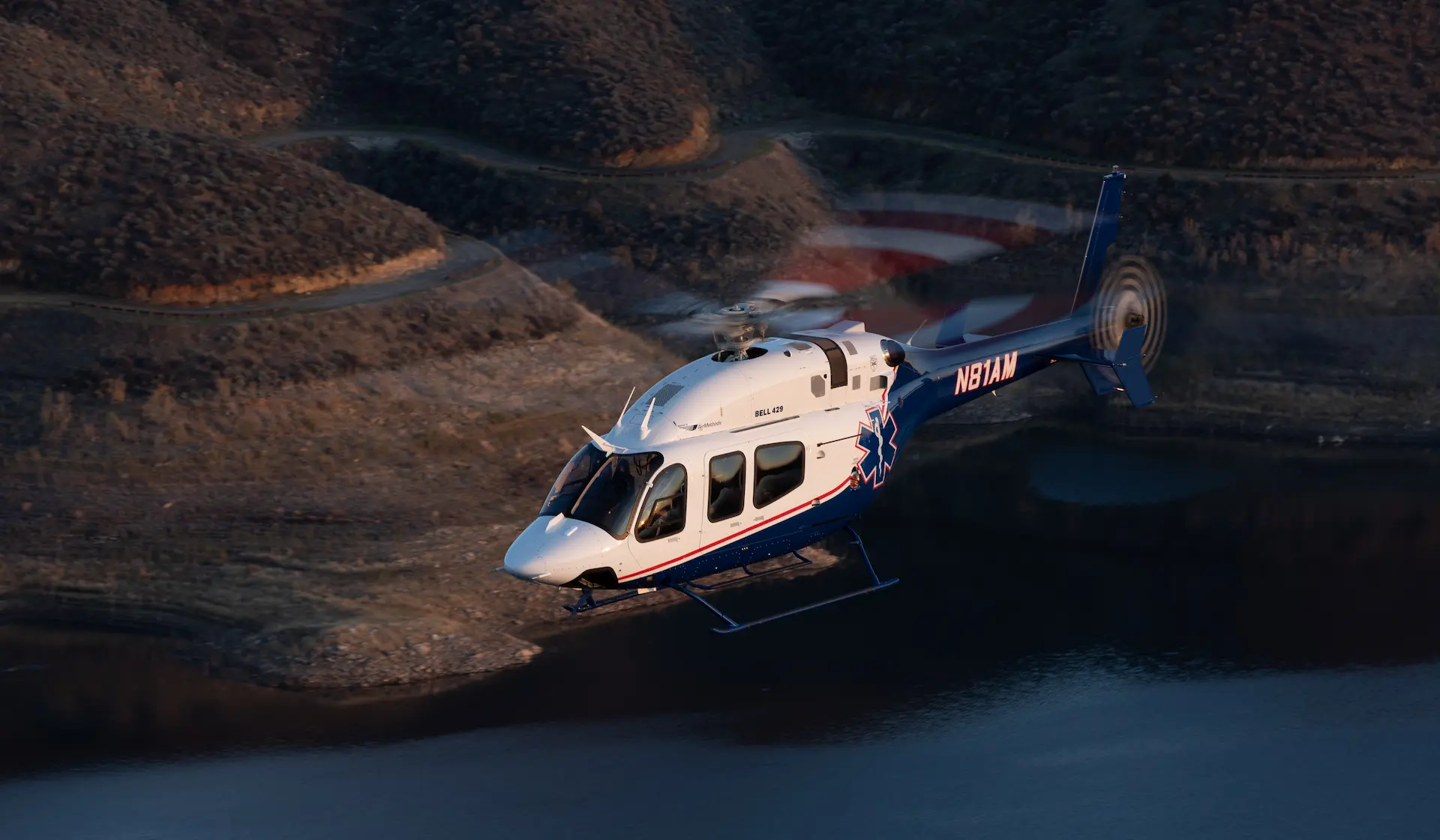
Clinical Director Lisa Kettunen visited Hemet for a clinical base audit, and to check up on how well the new aircraft is working in the clinical sense. She and Hemet-based Kleinschmidt both noted that its newness and having to regularly transfer the medical equipment between aircraft makes establishing a standard interior equipment layout a little problematic. Ongoing experience and the eventual retirement of the current AW109 will greatly ease those growing pains, however, and some very good features have already been noted. “We’ve established that this aircraft can carry up to 580 minutes of oxygen on board, and that’s a fantastic feature,” Kleinschmidt pointed out. The 429 has a ten-liter tanked LOX (liquid oxygen) system, a system type for which Air Methods’ minimum onboard requirement is greater than the maximum amount able to be carried on a cascade (tanked gaseous) oxygen system, but the 429 exceeds that minimum by a massive margin. “Having the LOX system means there’s one less thing that you have to think too critically about, because even the minimum gives you hours of oxygen,” Kettunen added.
Modular Approach
The modular medical fit-out enables flexibility in layout, so experience and experimentation will determine how best to utilize the interior, and Kettunen remarked that she hoped the medical personnel and aircrews felt comfortable in communicating concern about any features, protocols or layout situations that are found during service to need serious re-thinking. “The best thing for us is having all that room in the back, because we’ve come from operating in a much smaller airframe, so we’re really stoked with the 429 and its flexibility,” Kleinschmidt enthused. The Hemet aircraft do not conduct such specialist missions as PICU and NICU (pediatric or neo-natal intensive care), although the Air Methods crews can support such specialist teams. Kettunen advised, however, that on occasion the Hemet crews did end up as de facto providers due to the unavailability of appropriately qualified and equipped providers. “The healthcare industry as a whole is currently struggling to find and retain qualified personnel, so it hasn’t been unusual that no qualified team is available, or that they are poorly equipped. On those occasions, we’re just the closest, next best option,” she said. “So, although we’re not a P/NICU team, we can do the high-flow nasal cannular for pediatrics, the oxygen flow from the ram-cannular increasing the pressure to support their breathing.” Kleinschmidt added that such young patients were also likely to be victims at scene calls, necessitating immediate care until qualified specialists became available and for that reason, pediatric care is a strong focus of the medical crew training regime.
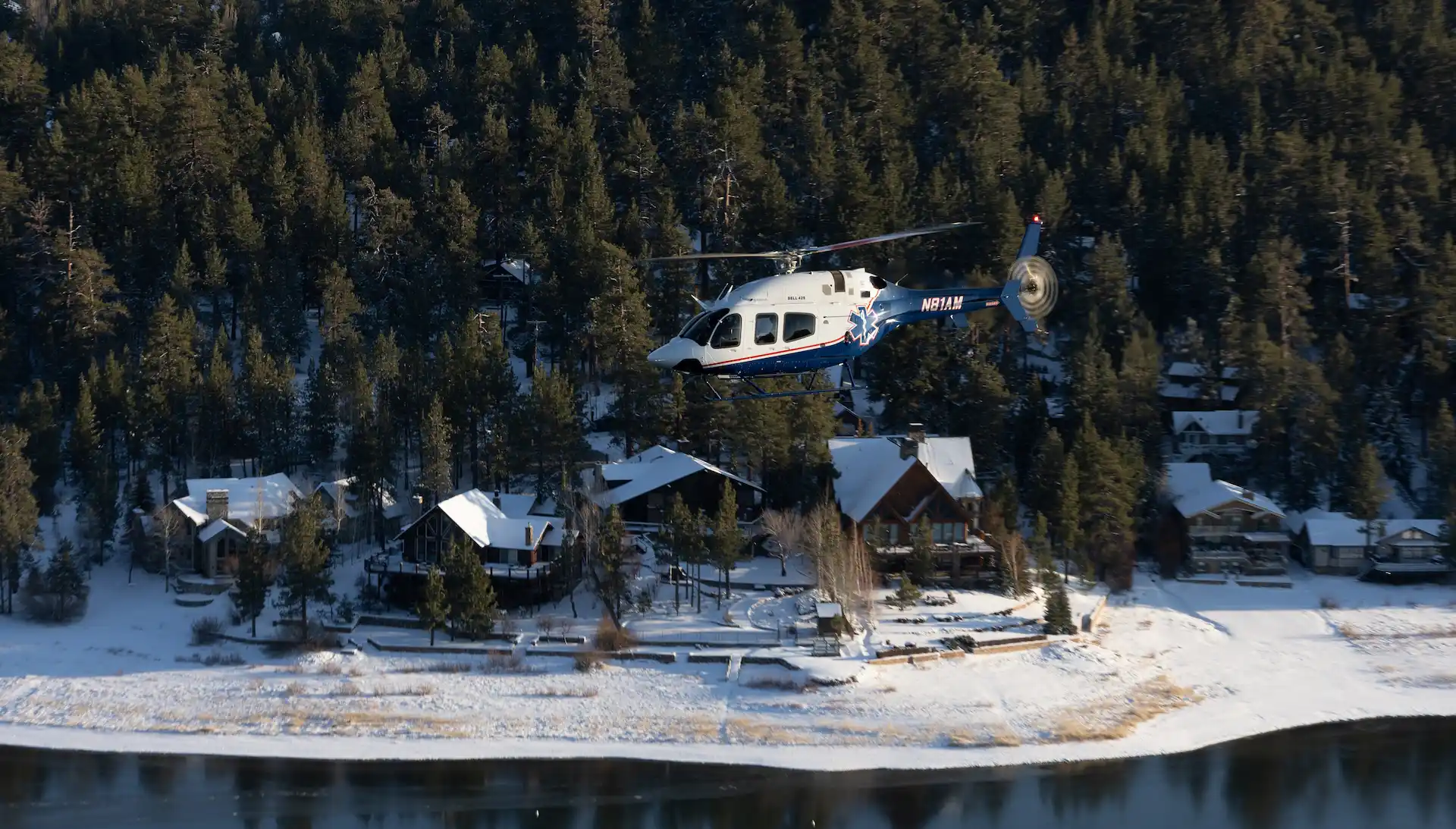
The 429 is easy to load and unload as it is equipped with its own rolling gurney, negating the need to wait for a hospital or ambulance gurney that may or may not be ideally matched to the aircraft. Kettunen pointed out that every time a patient is moved from one stretcher to another, risk is increased, so not only does the onboard gurney simplify things, it also minimizes the level of patient risk. “You don’t need a lot of hands and can do most of it with your partner,” Kleinschmidt commented. “When you have your own litter, your own bags, you don’t need the hospital to come and help you. The flow of a call goes more smoothly, and it simplifies the workload when you can start and set up the way you need it to be, right from the outset.” He really likes loading through the rear clamshells and pointed out that in comparison, loading through the side necessitates lifting really high and bringing people in under the rotor disc. Szaroleta was highly complementary of United Rotorcraft’s rear-loading gurney design, as it allows the option of transitioning to other types of stretchers/gurneys if that is considered desirable in the future.
People and the Machine
Mercy Air’s Hemet base currently has three full-time pilots on its roster, with a fourth position filled by Air Methods relief pilot Roger Maynulet until another full-timer is employed. Maynulet had flown the new machine for about a month and a half at the time of HeliOps’ visit, including its first revenue flight, a short inter-hospital transport in Riverside. He reported being extremely impressed with the 429, after extensive experience in the Bell 407, Agusta products and Turbomeca-powered machines. “I feel it’s one of the first helicopters that’s been engineered with the pilot in mind,” he stated. “It’s very pilot-friendly and Bell have obviously focused on ease of flight, flight safety and ergonomics.”
The base currently operates an Agusta 109-Power and Maynulet considers that in comparison, the 429’s new generation avionics and autopilot provide enhanced reliability and give the aircrew increased confidence in their ability to safely complete a flight, with a greatly reduced pilot workload, particularly under IFR. “That first flight was in the dark but I had the auto-pilot set, made the approach and it was super-easy. It’s definitely a pleasure to fly – a real pilot’s aircraft. It’s comfortable, there’s plenty of room for the crew to do what they need to do, and patient access is not an issue. Bell have finally figured out how to make a comfortable pilot seat and there’s plenty of leg and head room for a tall pilot, whereas the 109 is quite tight. In other birds in our fleet, such as the 407 and 109, patient access can be an issue because of the limited space, particularly on a patient with injuries to their lower extremities,” he stated.
Hemet’s three full-time pilots should all be 429-qualified by the time this article is published and Maynulet explained that all check rides and qualifications are conducted at night, so all pilots are fully night rated but he and one full-timer who is relieving at another base are currently the only base pilots that are 429-rated. When all base pilots are checked out in the 429, the 109 will be replaced as the primary ship and most 109s will be transferred to the company’s bases in Nevada or reinvested, with several retained in California as spares to cover scheduled maintenance outages and unscheduled AoG instances. “The 109s are coming to the end of their service life as far as we’re concerned, and we’ve found that we’ve had to deal with major maintenance issues such as cracks in the airframe, engine replacements and the rotor-blade tip-cap issue. Their in-service rate is comparatively poor compared to other airframes out there and ultimately, the 429 best fit the role as their replacement,” Szaroleta commented. While the 429 is a little taller than the AW109, Maynulet commented that from a pilot’s perspective at a landing zone, the footprint was not noticeably any larger. “We have some fairly conservative clearance limitations on our LZs, so I’ve never seen any issue with size or had to do any dodgy approaches.”
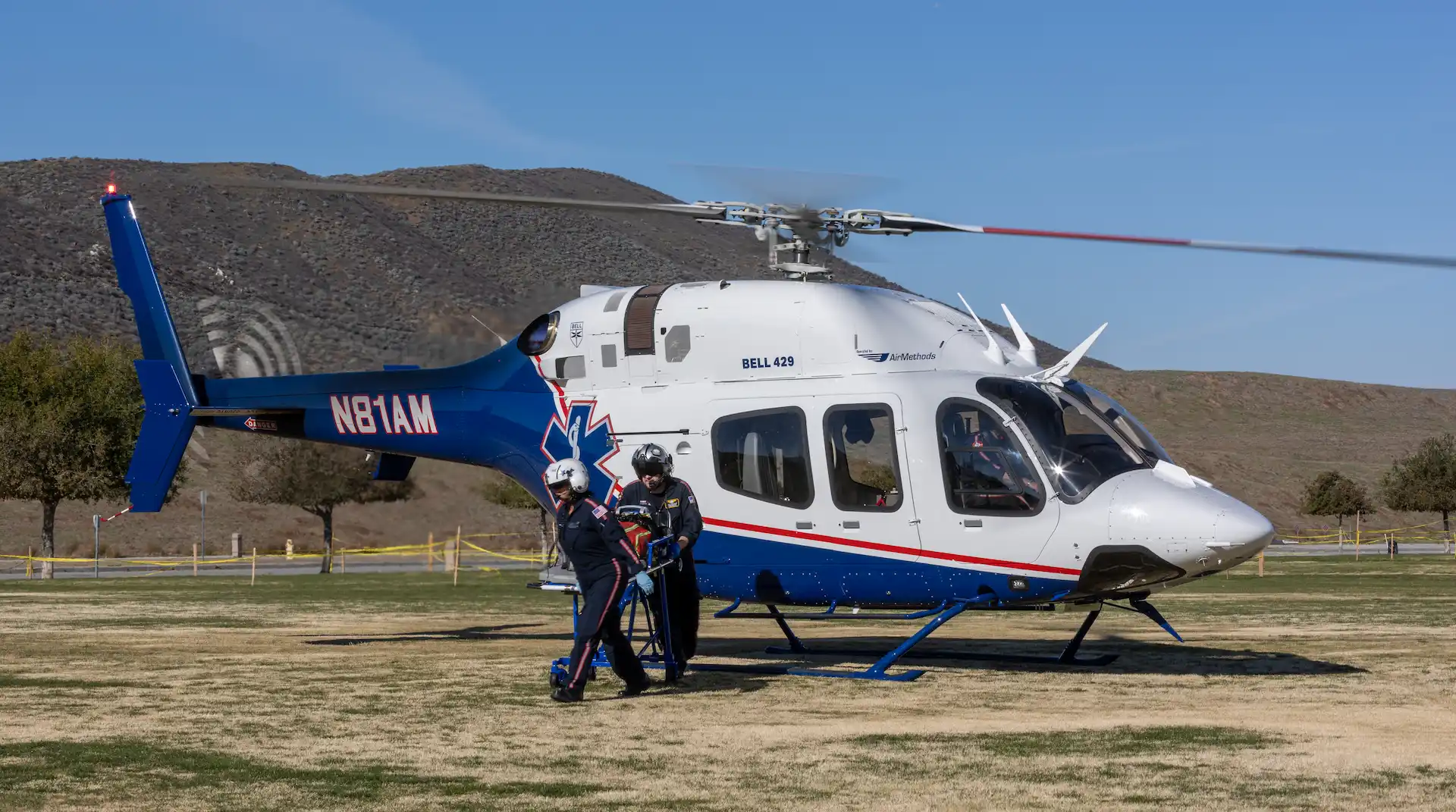
The 429 can load and unload through either the side doors or the clamshell doors at the rear, and Maynulet explained that while there are no established SOPs (standard operating procedures) regarding hot loading, each case is determined by crew and pilot interaction and a consideration of each instance’s particular circumstances, such as safety concerns, waiting times or fuel limitations. “If someone is on a backboard, it can be easier to load through the side door, but the crews have been doing practice runs and feel comfortable that they can maintain a safe distance from the tail-rotor when loading a patient through the clamshells. That’s something that we’ll be looking at over the next couple of months; how we limit access under the tail-rotor and whether we have to keep ground crews away while we load. That’s going to change some of our procedures, but the situation can be fluid and we always have the option to shut down on the scene if safety is an issue, then quickly start back up after load-up.”
Performance
Maynulet appreciates the new Bell’s high levels of performance, noting that even at the high density-altitudes commonly encountered – such as on a hot day up at Big Bear’s 8,500ft airport – there is no problem carrying out a max’ performance takeoff, even at maximum gross weight. “I did a max’ performance takeoff out of Big Bear and shot up to 300ft with no problem, and I was only at eighty-five percent,” he related. Being a new type for the base can pose some challenge for pilots, due to such differences as layout and procedures but Maynulet stressed that it is up to pilots to be disciplined and professional about transitioning to a new type, commenting, “It can be easy for someone to be a little averse to stepping out of their comfort zone, but as the professionals that we are, we need to learn the new automation, learn the differences and challenges that any new aircraft is going to pose, remembering that it’s just a tool and it’s our job to learn how to best use that new tool in the same situations that we’re familiar with. Understanding and molding ourselves to those different limitations and capabilities is what makes us professionals and is what we get paid for.”
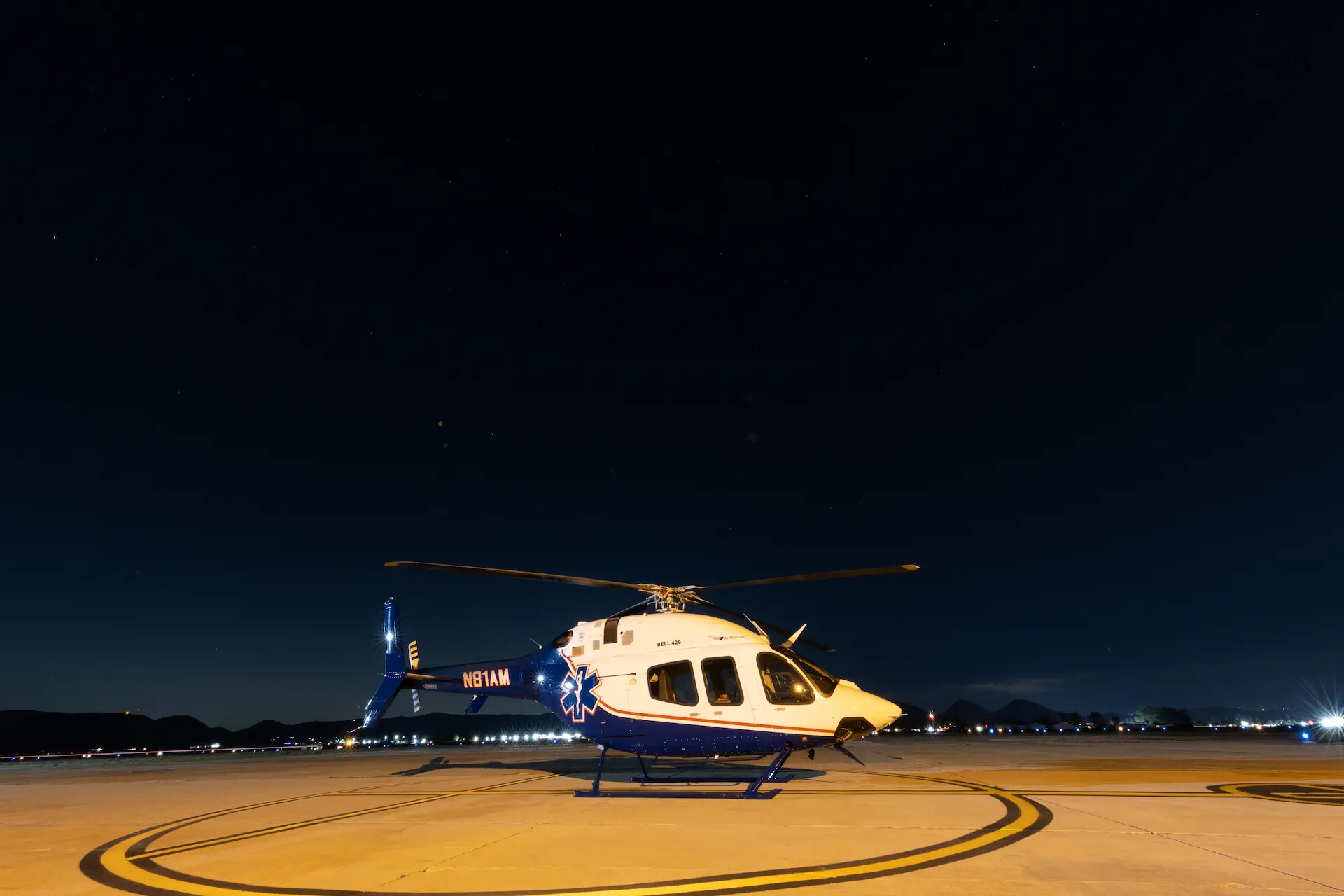
A valid and important consideration when assessing the 429’s suitability in its intended role is its cost of operation. Szaroleta cited domestic production, the highly digitized systems, its newness and the inherent design of the aircraft as all combining to make the overall cost of its operation one of, if not the, lowest in the industry for a twin-engine machine. In the current reimbursement environment and with the introduction of the ‘No Surprises’ Act early in 2022, lower operating costs are a crucial component of maintaining efficiency, cost-effectiveness and financial viability for commercial EMS and AirMed providers. Hayflich added that Air Methods had seen the writing on the wall and, over the last couple of years, aggressively and successfully pursued in-network approval with many of the major insurance companies, to the extent that she estimated 70 to 80 percent of the current business is now conducted as in-network, with a goal of reaching 100 percent by the end of 2023 – meaning that a majority of patients transported by Air Methods will have an in-network cost based upon the patient’s individual deductible.
Expansion?
Whether the 429 will facilitate an expansion of the Hemet base’s normal service area remains to be seen, as experience with weight limitations and fuel/range calculation is ongoing and only real-world experience will reveal what range improvement such measures as using economy cruise power and determining any redundant and dispensable medical equipment will permit. In all likelihood though, the ability to conduct specialist transport missions such as those requiring ECMO, will create occasional demand for operations throughout the greater proportion of the state.
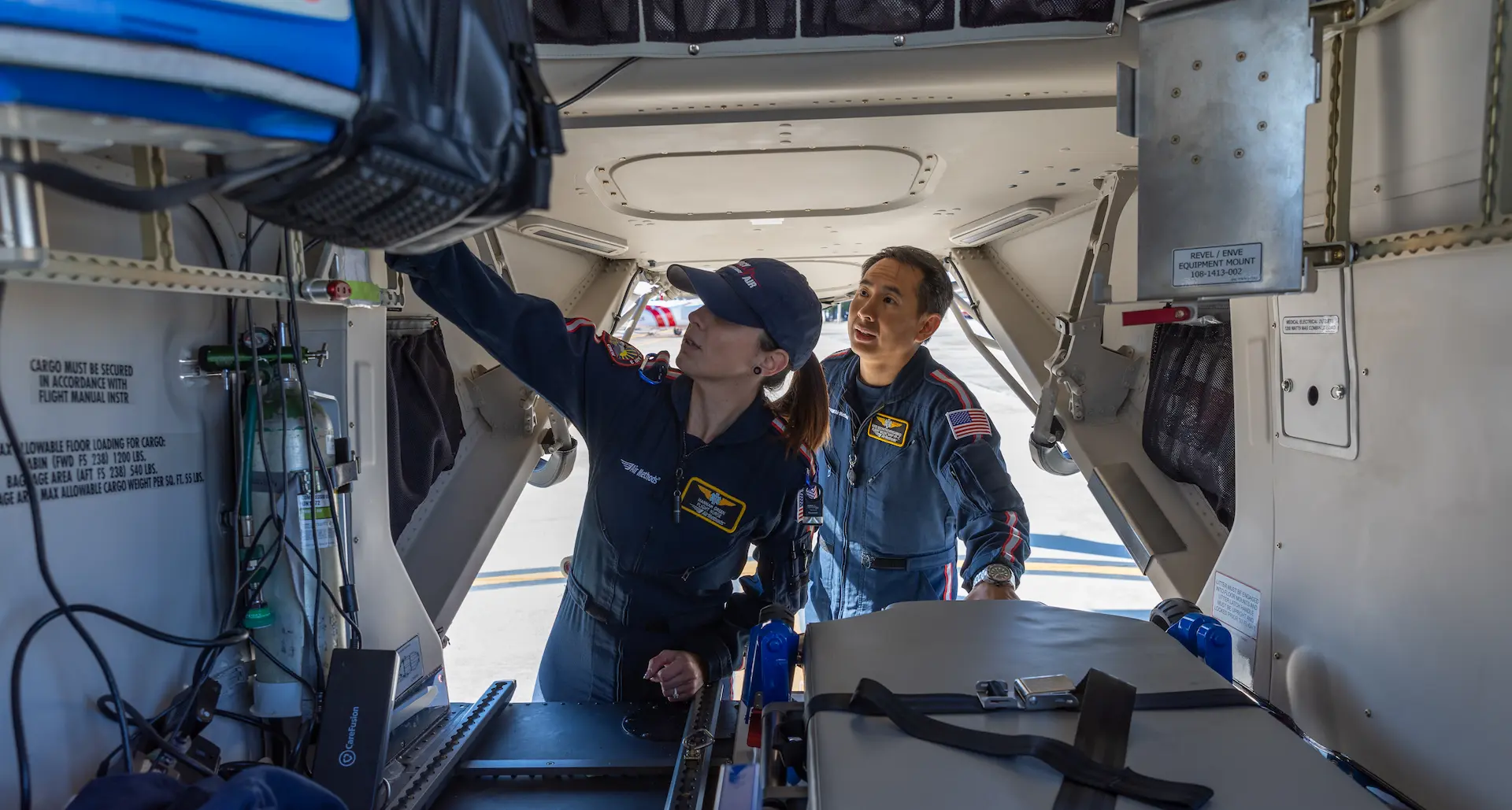
Maynulet did remark, however, that the 429 will undeniably expand the base’s IFR capabilities within the service area, opining, “I’m definitely more comfortable taking flights out from Catalina over water in the 429 than I am in the 109, and we have the mountains as well. That’s why I think it’s important to have something like the 429 that gives us those extra capabilities at both sea level and at altitude.” Having the new aircraft at Hemet also brings intangible benefits and Maynulet concluded, “Flying a new, modern aircraft with effective air-con’ and all the comfort features; what that does for morale and the culture at a base is immeasurable. It lifts attitudes and really makes a difference to how people approach their jobs.”
 HOME
HOME


